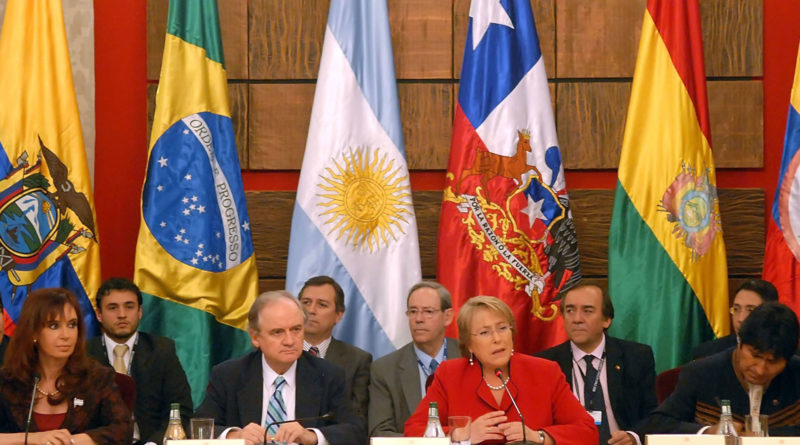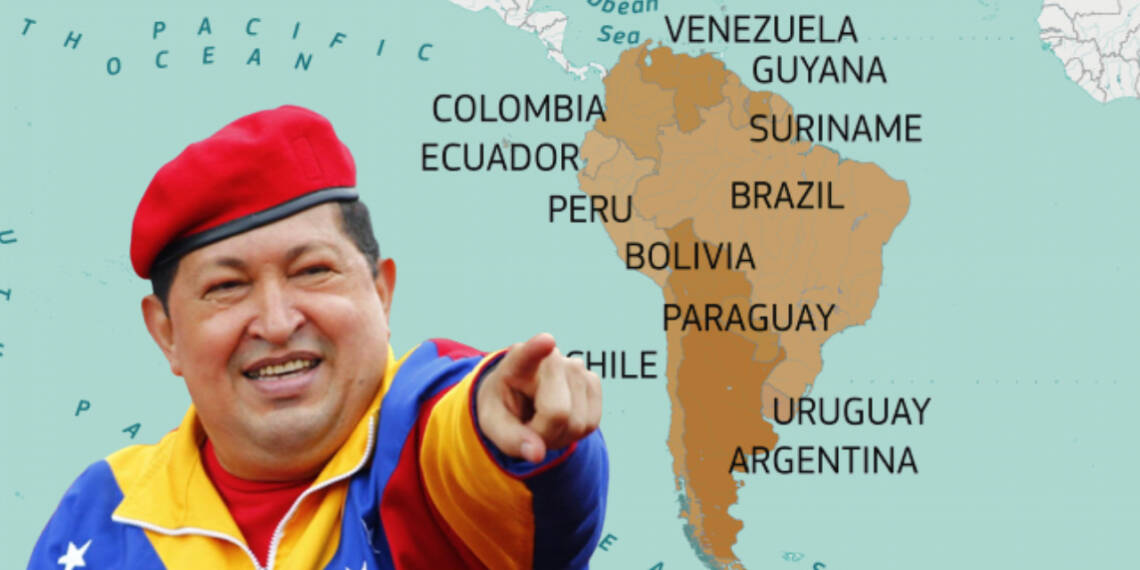Are you ready for a revolution? Hugo Chavez, the late president of Venezuela, certainly was when he established the Bolivarian Revolution in 1998.
Chavez had a dream of a unified Latin America and the Caribbean two decades ago. In 1998, Chávez’s Bolivarian Revolution was the answer to this dream, and it has been propelling the region to a new era of sovereignty and integration.
But what is the legacy of Hugo Chávez and what exactly did he do to ensure his dream of a unified Latin America and the Caribbean? Watch on to find out!
The late president of Venezuela, Hugo Chavez, is remembered as a revolutionary leader who ushered in a new era of politics in 1998. Taking inspiration from the 19th-century Venezuelan leader Simon Bolivar, Chavez founded the fifth republic movement and the United Socialist Party (PSUV) and sought to introduce an economic and social policy that was based on nationalism and a state-led economy.
To achieve his goals, Chavez made changes to the constitution and passed 49 laws that aimed to redistribute land and wealth from the rich to the poor. He also introduced door-to-door anti-poverty activities, such as food distribution and vaccination campaigns, and increased access to education in slum areas. Chavez also introduced land reform to eliminate large estates in 2006 and nationalised key companies in energy and telecommunications sectors in 2007.
Read more: Bolivia: Electrifying Latin America
His policies were aimed at thwarting US interventionism in the region. Chávez’s vision was to always look beyond the borders of the country he governed, and through a number of successful regional and international integration mechanisms, he achieved economic, commercial and financial cooperation agreements and respect and credibility worldwide. He made possible what Simon Bolivar dreamt of.
Bolivarianism
Two centuries ago, Simón Bolívar, a hero of Venezuelan independence, dreamt of a sovereign, prosperous, and unified Latin America and the Caribbean. His hope of creating a “Patria Grande” (Great Homeland) to protect against the looming threat of imperialism was not unfounded.
The US government’s implementation of the Monroe Doctrine in 1823 was a clear sign of its desire to dominate and control Latin America and the Caribbean region. The 19th and 20th centuries were full of US-led aggressions against Latin American and Caribbean nations, leaving Cuba isolated and in resistance.
However, Chávez’s Bolivarian Revolution in Venezuela in 1998 and his refusal to bow to US imperialism brought Bolívar’s dream back to life. This inspired a new wave of support for sovereignty and integration across Latin America, paving the way for new alliances that could lead to the region’s second independence.

Chavez achieved this through the dismantling of the colonial structure, with integration proposals such as the Bolivarian Alliance for the Peoples of Our America (Alba), Unasur, the Southern Oil Pipeline, the Bank of the South, Petrocaribe and Celac.
CELAC
Let’s take a look at CELAC. On December 3, 2011, the Community of Latin American and Caribbean States (CELAC) was formed in Caracas, Venezuela, under the chairmanship of Hugo Chavez.
Read more: US flips migration laws to target Nicaragua
CELAC aimed to end the US’s political and economic influence in the region. Ever since then, the alliance of 33 countries has represented the region’s interests on a global level in conversations with the European Union, China, Russia, and other influential players. Today, CELAC is an organisation which has a significant economic involvement in world affairs and is dedicated to modernizing the entire continent by pushing for increased integration.
ALBA
Apart from CELAC, there is another organisation in Latin America called the ALBA. In Havana, Cuba on December 14, 2004, Hugo Chávez and Fidel Castro, two revolutionary leaders, formed the Bolivarian Alliance for the People of Our America – Peoples’ Trade Treaty (ALBA-TCP).
Their main aim was to encourage integral development in the region through the integration of political, economic, social and cultural facets.
Petrocaribe
Similarly, Chavez also formulated the PetroCaribe alliance on June 29, 2005 as a way to provide oil at more favourable prices and with long-term payment plans to Caribbean nations to reduce their reliance on costly US vendors.
The program also enabled the member countries to create their own electricity sector and finance over 700 socio-productive plans. In June 2018, Venezuela suspended PetroCaribe for the time being due to the US sanctions on the nation’s oil industry, yet promised to reinstate the system when oil production increases again.

UNASUR
Another organization which Chavez had a hand in is UNASUR. The establishment of UNASUR on May 23, 2008, in Brazil aimed to defend a South American identity and citizenship that is inclusive of its diverse peoples.
This organization’s primary goal is to provide its citizens with unified passports, as well as the right to mobility, work and education. Unfortunately, the bloc has been hindered due to a shift to the right, however, with new progressive governments on the horizon in Latin America, there is hope for a fresh start in the near future.

Conclusion
Overall, Chávez’s vision of global geopolitical integration, cooperation and solidarity has been a great success, creating a strong foundation for the future of Latin America and the Caribbean and beyond. His legacy lives on in the form of the successful initiatives he has put in place, and it is expected that it will continue to be of great benefit to the region in the years to come.
Chavez died in March 2013 after a two-year battle with cancer, but his legacy lives on. His policies, which sought to redistribute wealth and power from the rich to the poor, have been celebrated by many in Venezuela and his anti-American imperialist stance has been remembered and respected.
https://www.youtube.com/watch?v=2ukB4OIuO9o








